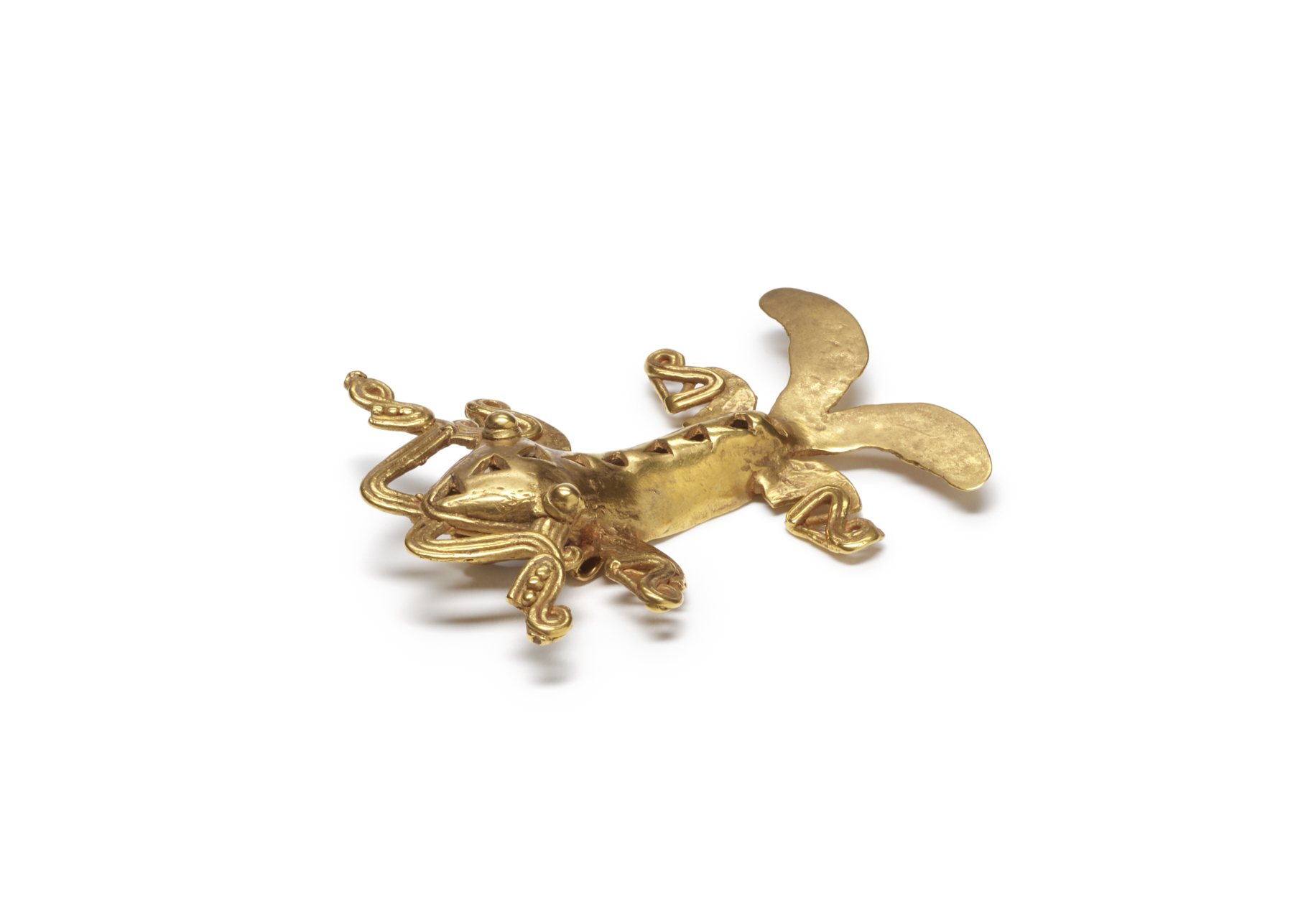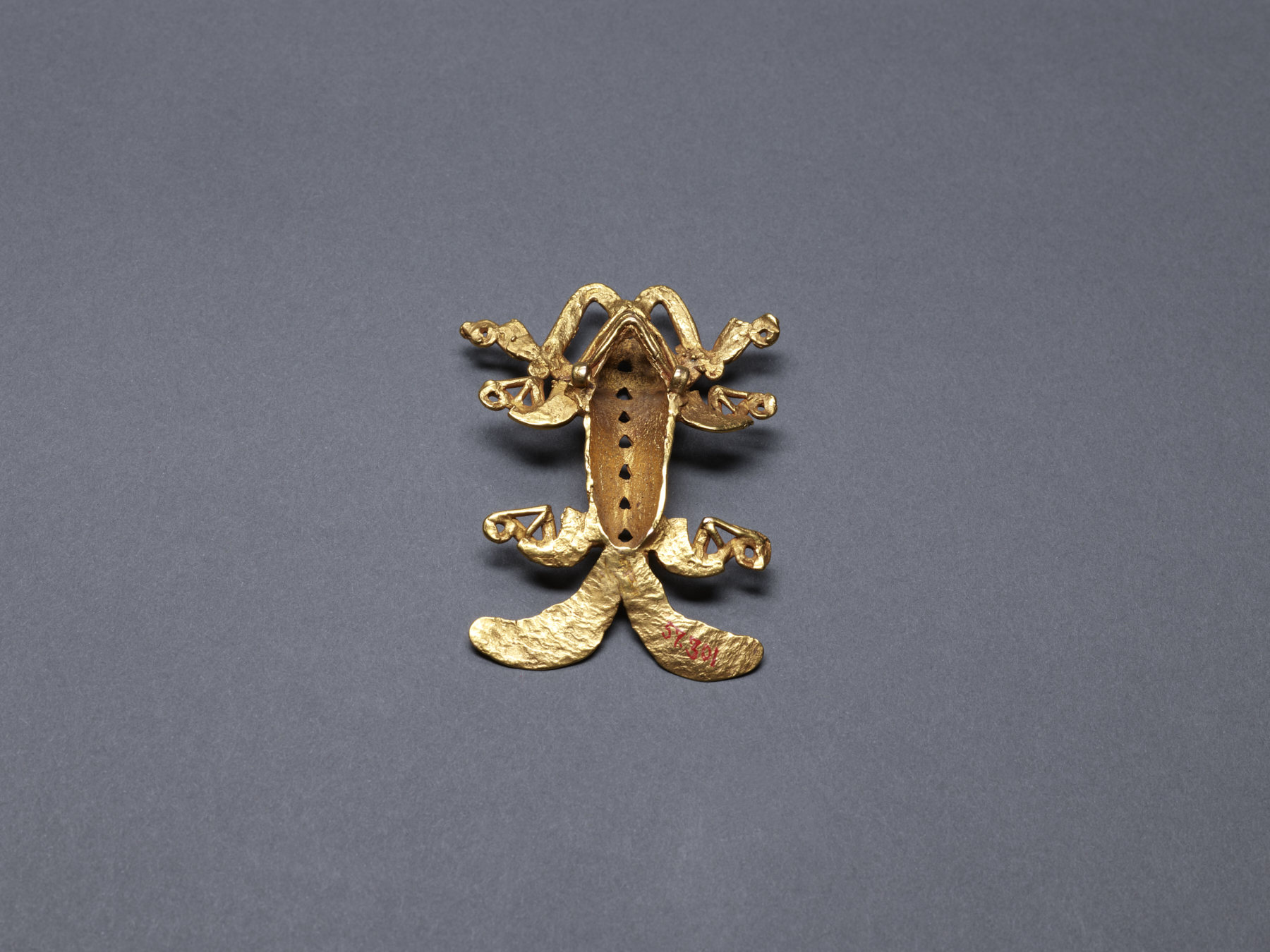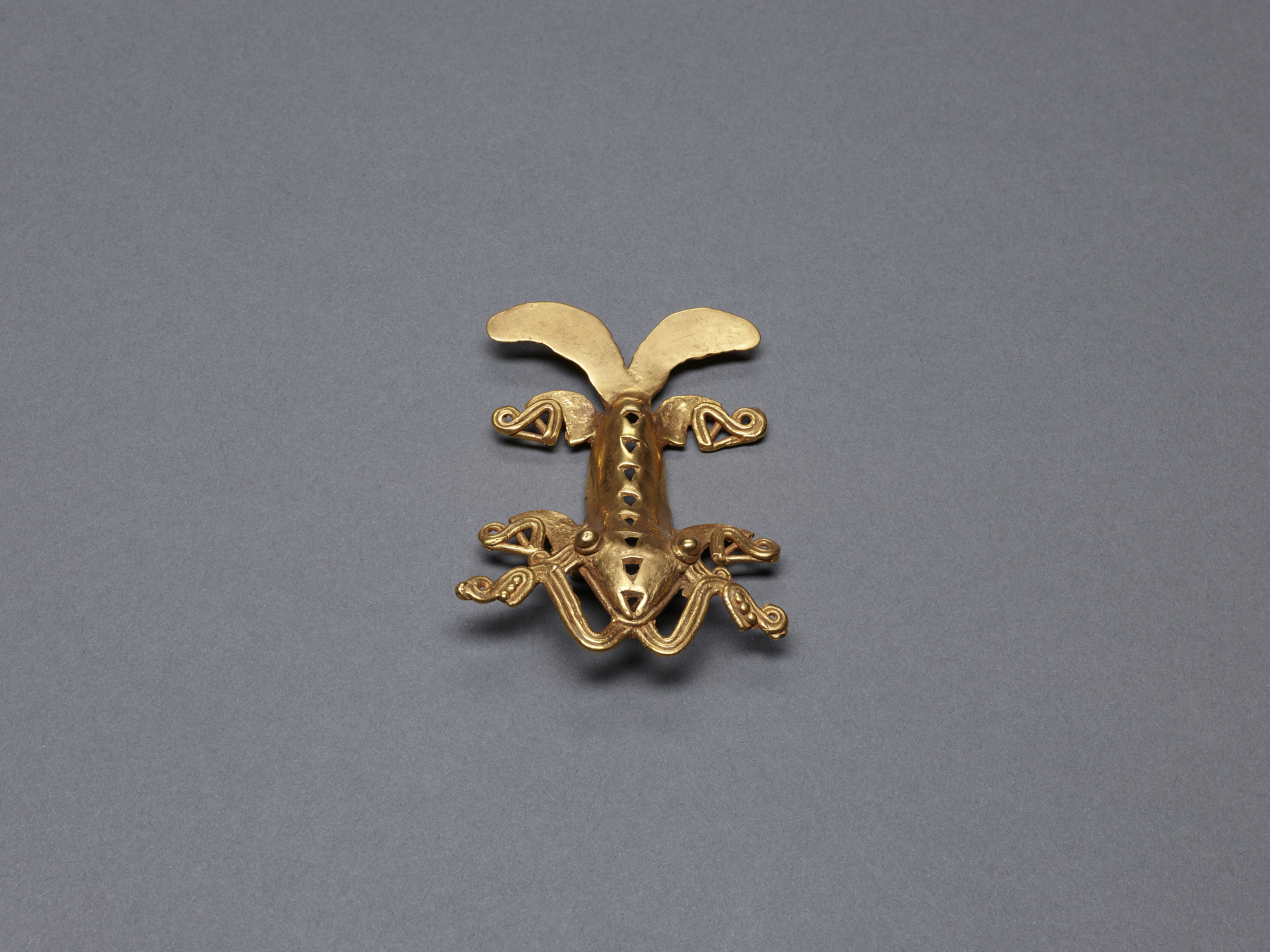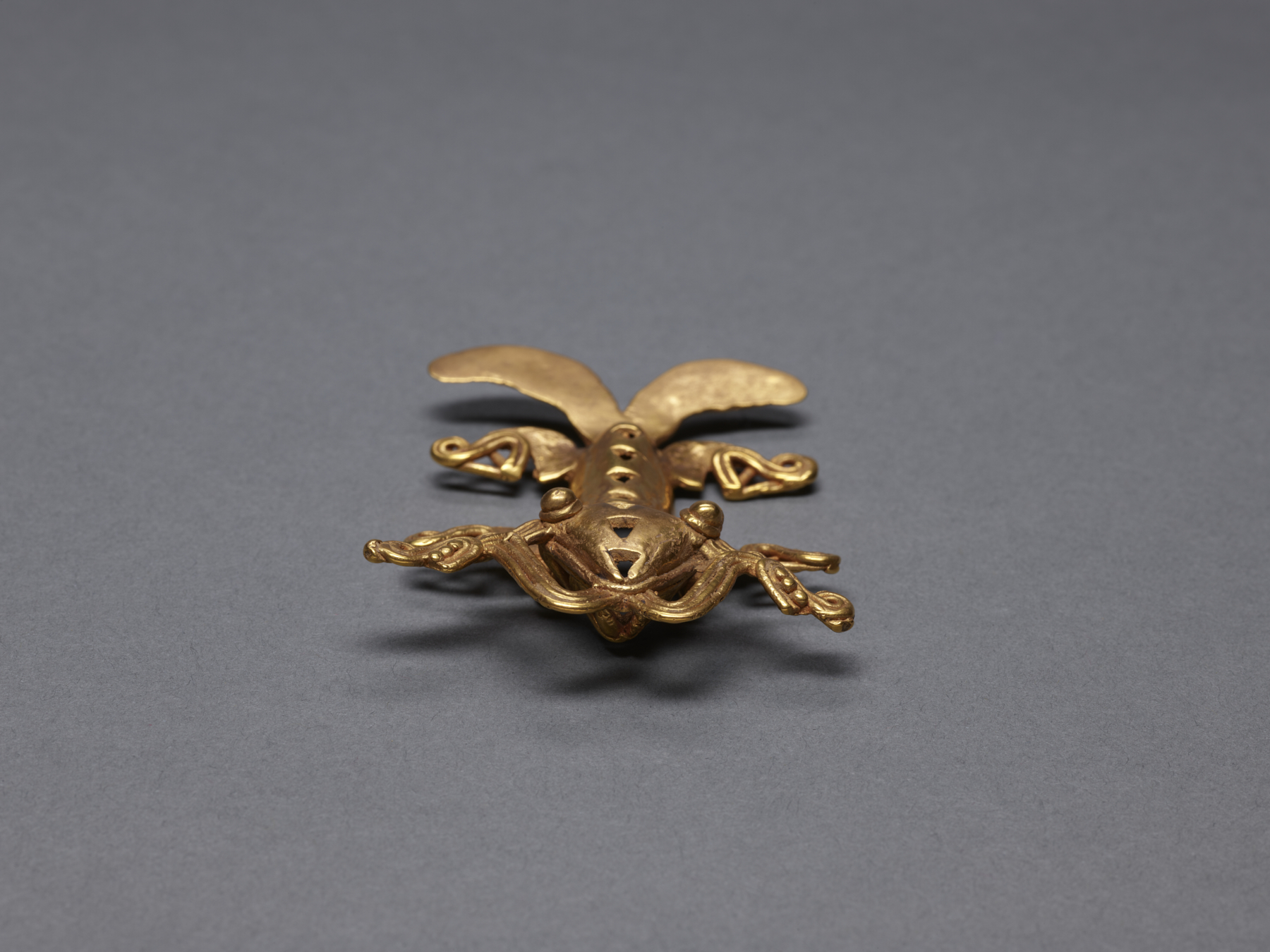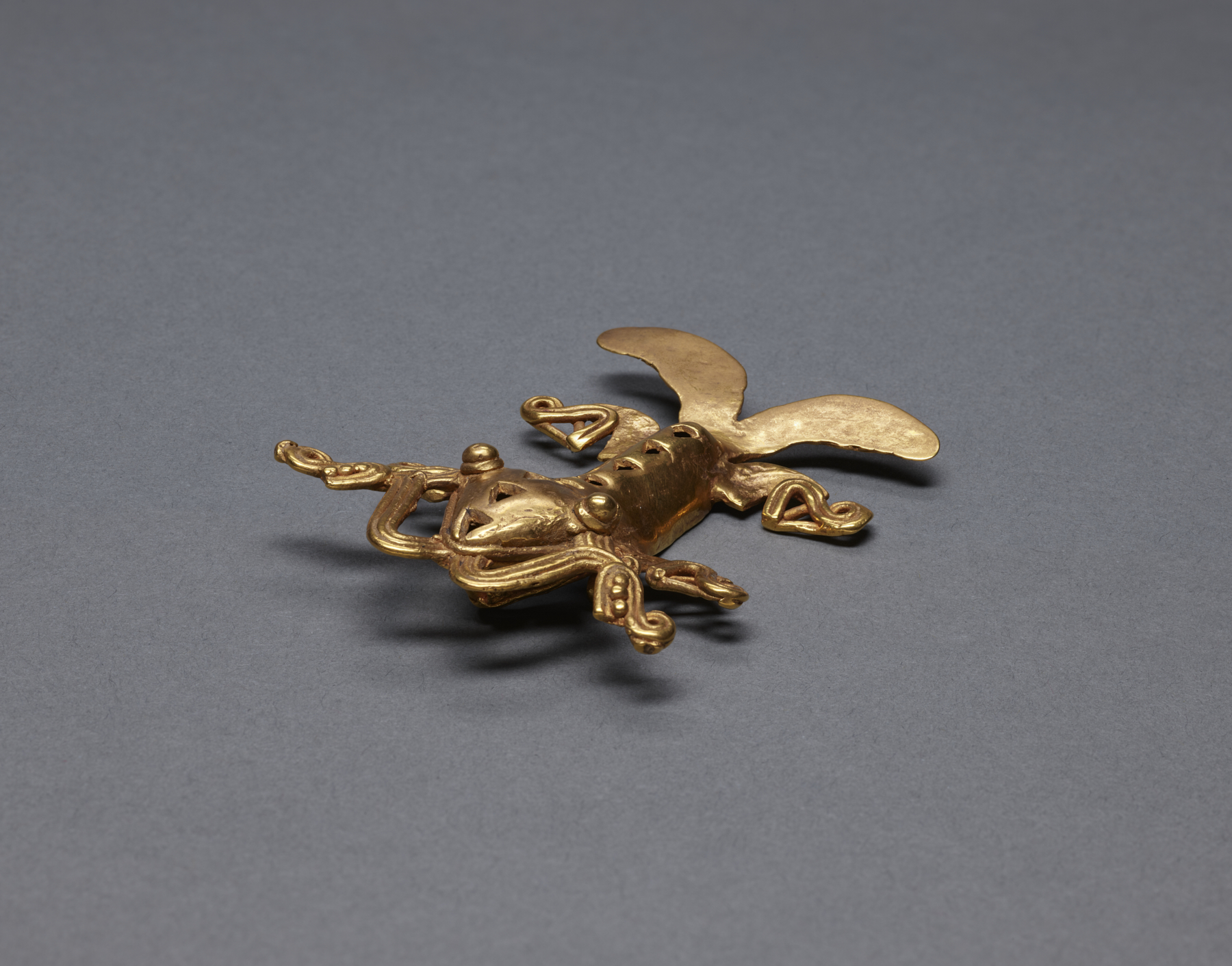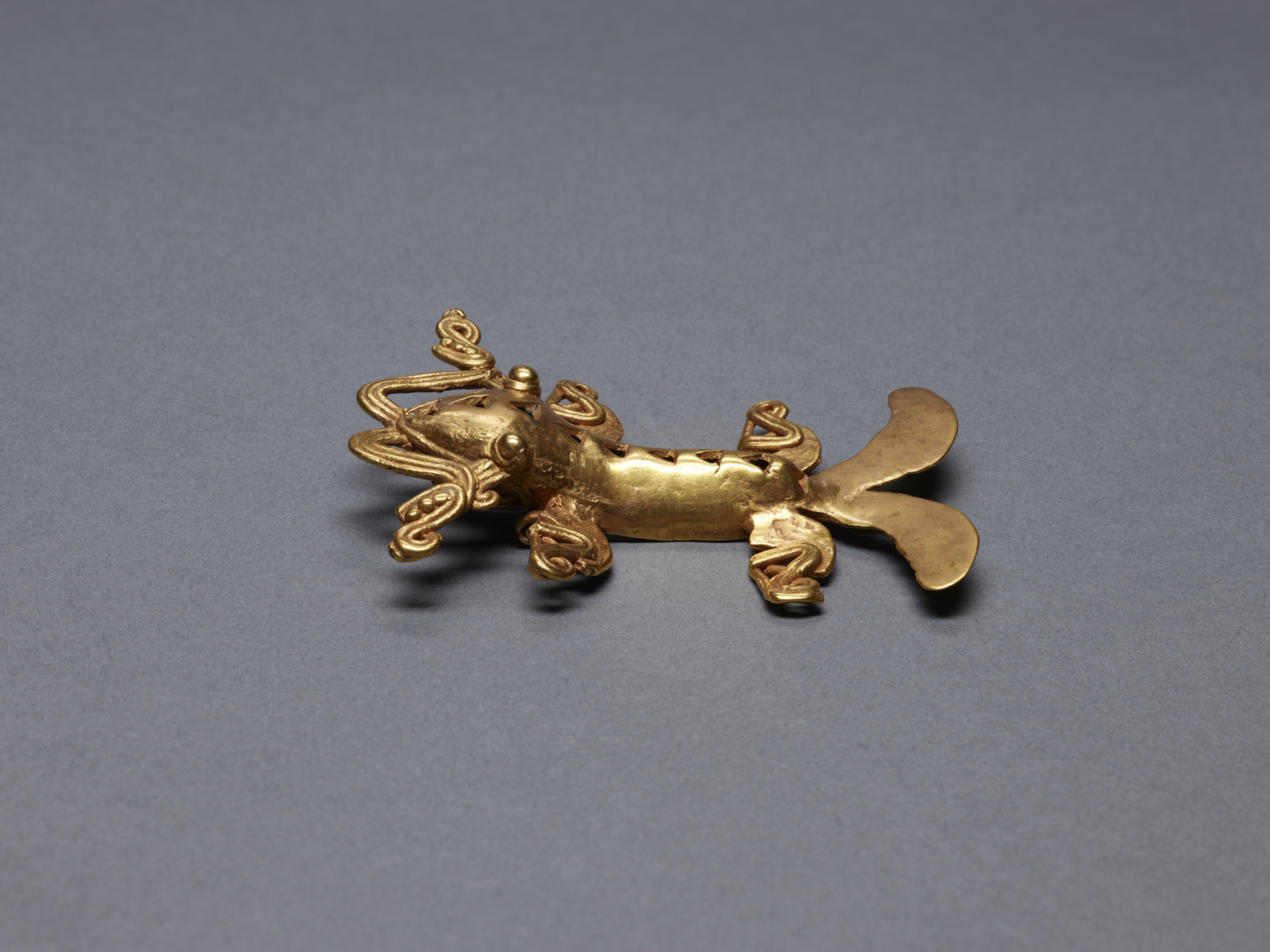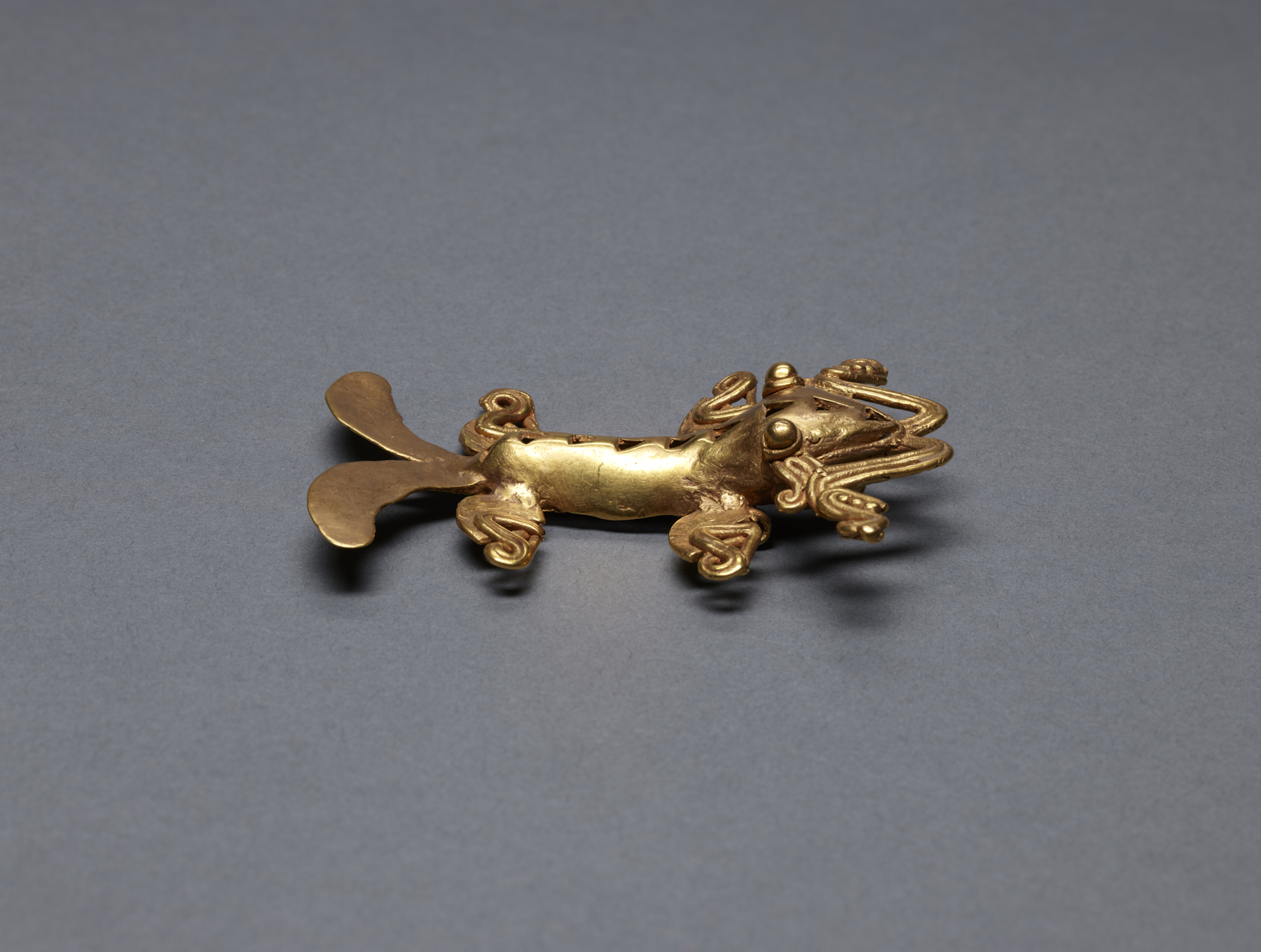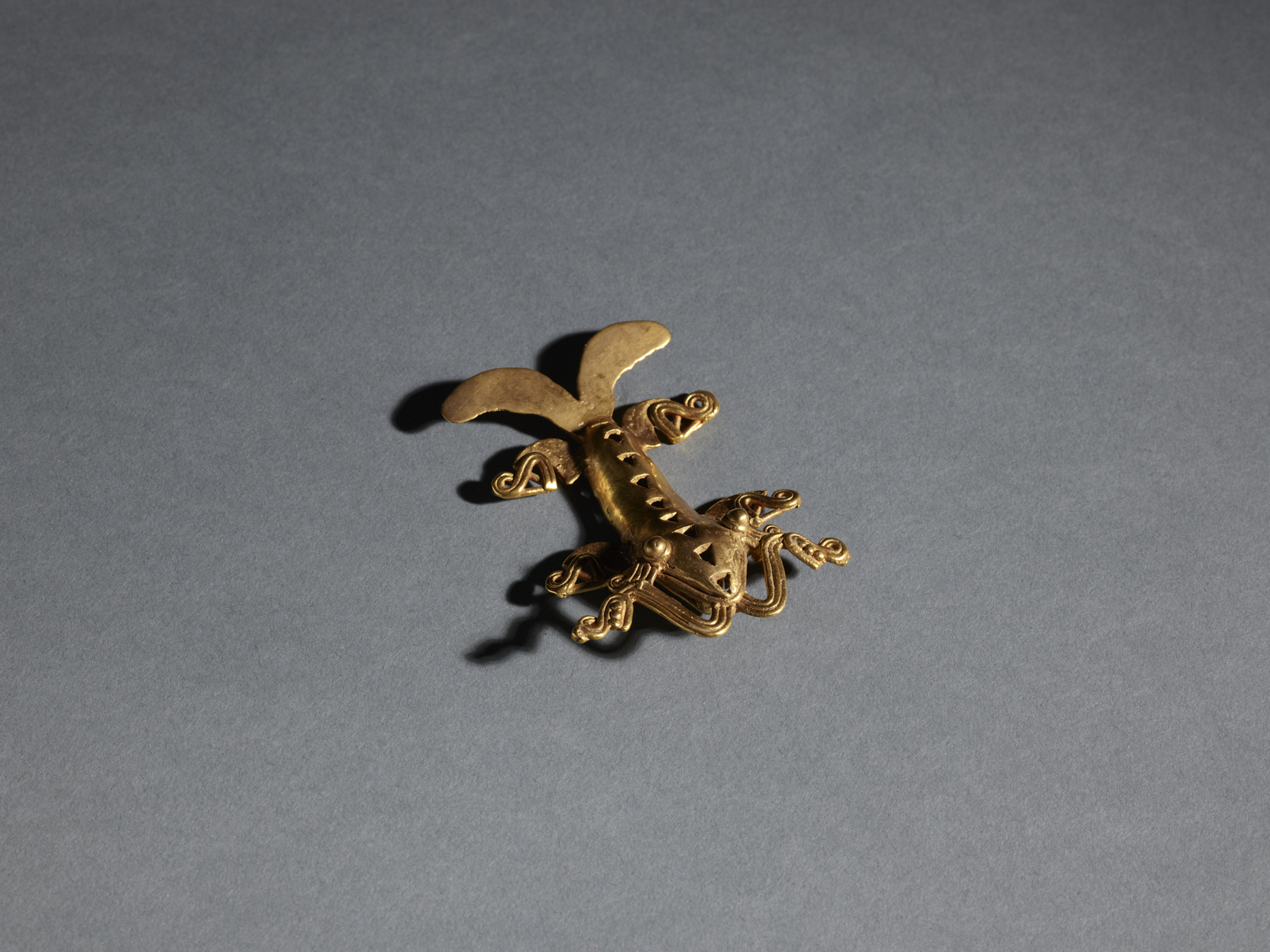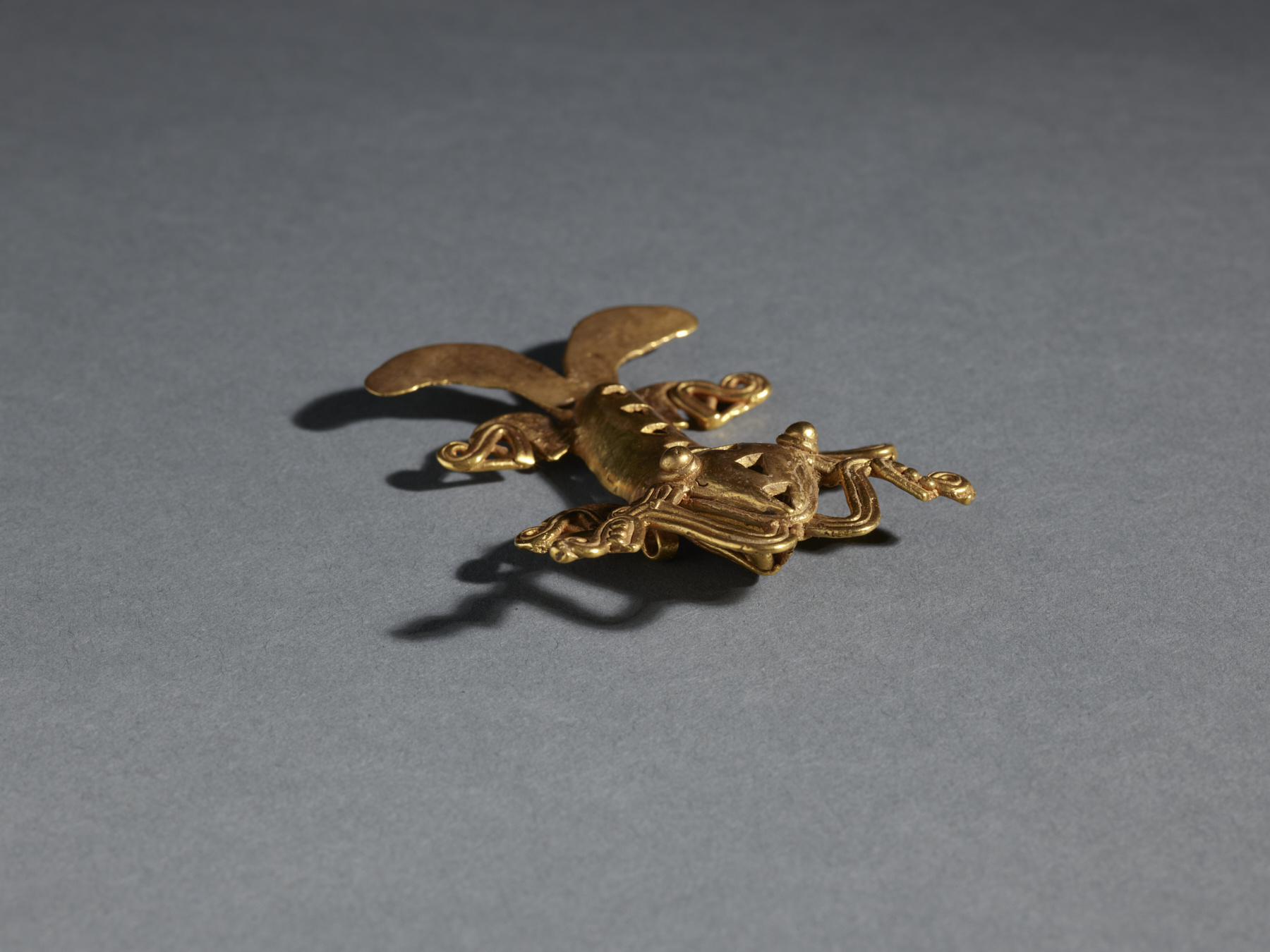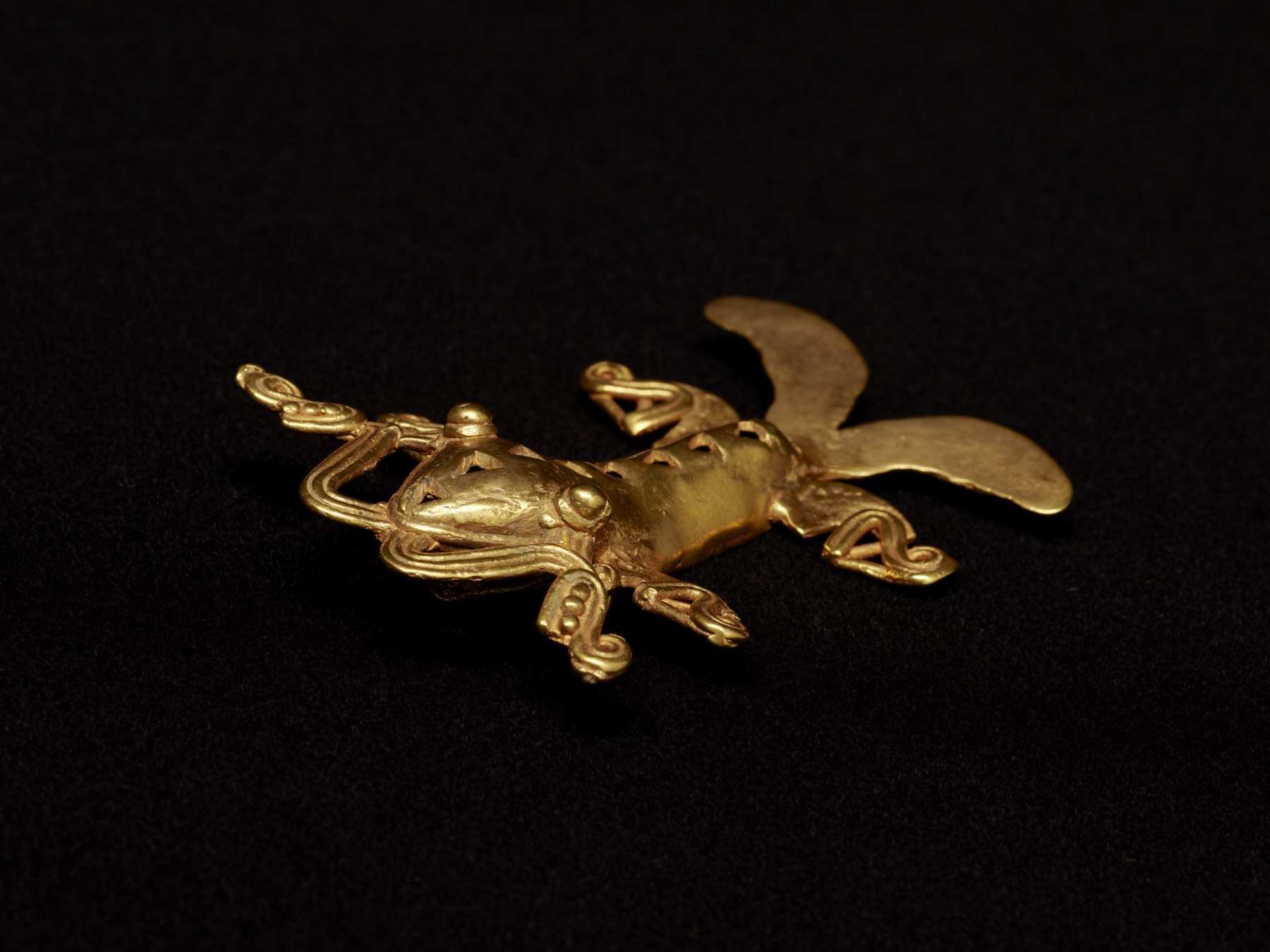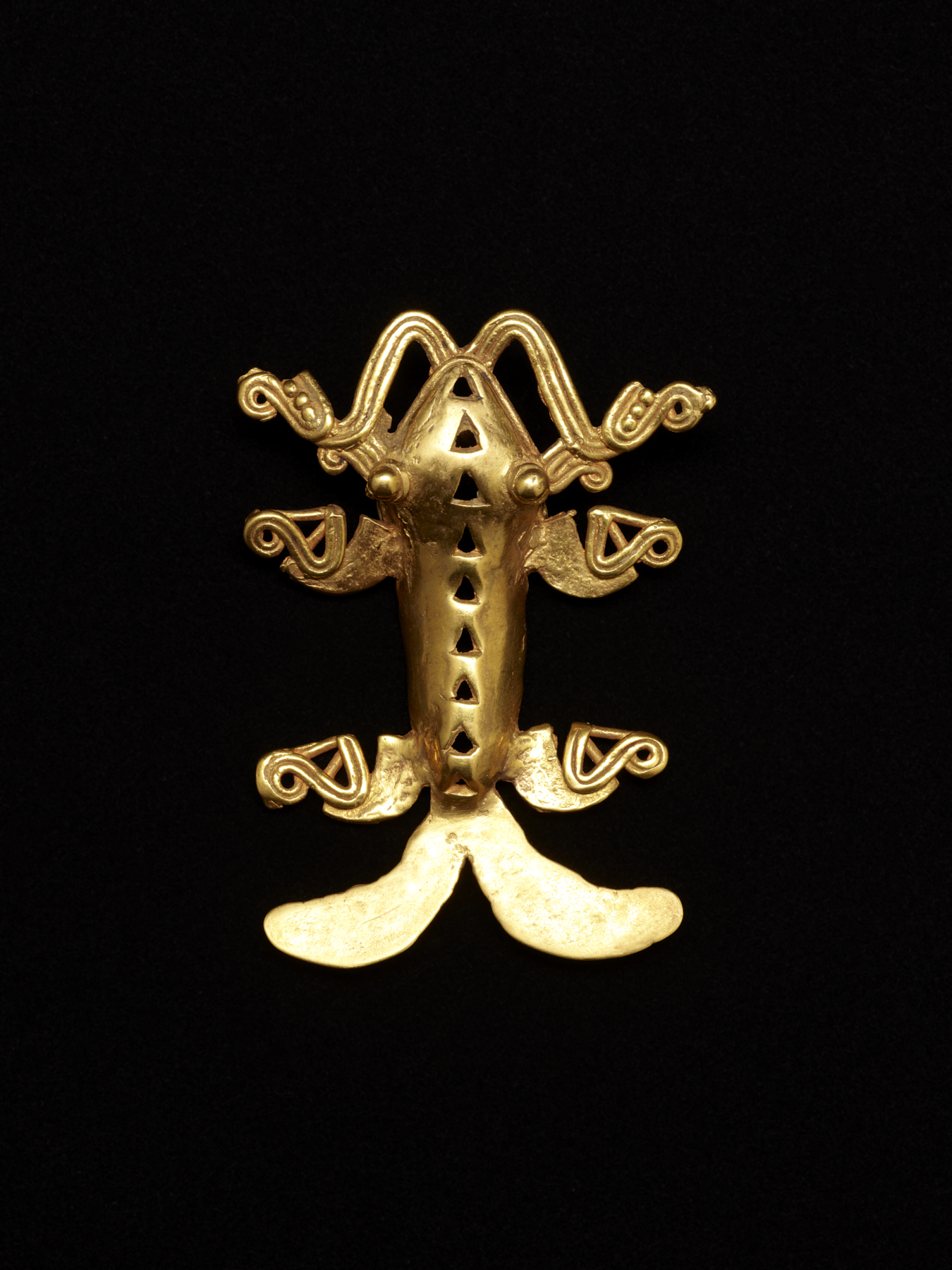Amphibian Pendant
This gold pendant combines the characteristics of a frog, an iguana, a crocodile and a shark. The motif seen coming from the creature's mouth is a double-headed crocodile. This stylized motif is seen everywhere in Pre-Conquest Panamanian art. Smaller crocodile heads sprout from the creature's "shoulders" to support the double headed crocodiles coming out of the animal's mouth. The head appears to be that of a frog, with large, round eyes that bulge out. Along the creature's spine are open designs in the shape of triangles, much like spines on the back of an iguana or a crocodile. The creature's limbs have stylized crocodile heads at their ends. A large, fish-like tail protrudes from the creature's end. Finally, the open mouth, seen only in profile, displays an impressive set of pointed teeth, enlarged versions of crocodile or shark teeth.
Part of the first group of ancient American gold objects to enter Henry Walters' collection, this composite amphibian creature is typical of the Gran Chiriqui style of Panama.
Provenance
Provenance (from the French provenir, 'to come from/forth') is the chronology of the ownership, custody, or location of a historical object. Learn more about provenance at the Walters.
Tiffany & Co., New York; Henry Walters, Baltimore, 1911, by purchase; Walters Art Museum, 1931, by bequest.
Exhibitions
| 2015 | Gold of the Ancient Americas. The Walters Art Museum, Baltimore. |
Geographies
Panama, Veraguas (Place of Origin)
Measurements
L: 3 5/16 × W: 2 3/8 × D: 11/16 in. (8.4 × 6 × 1.7 cm)
Credit Line
Acquired by Henry Walters, 1911
Location in Museum
Accession Number
In libraries, galleries, museums, and archives, an accession number is a unique identifier assigned to each object in the collection.
In libraries, galleries, museums, and archives, an accession number is a unique identifier assigned to each object in the collection.
57.301


